This post may contain affiliate links. This just means I may receive a small commission at no extra cost to you for helping them promote their product or service. I don’t endorse any services I don’t personally use or recommend.
This is the wildest destination in Costa Rica. Pumas, jaguars, ocelots, tapirs, coatis, and a plethora of other jungle flora & fauna call this peninsular primary rainforest home. And fortunately, the Costa Rican government has left the park natural and wild (especially when compared to paved easily accessible parks like Manuel Antonio). But there’s little info for travelers looking to plan their Corcovado National Park excursion, especially for budget travelers like us. But I’m here to break down everything you need to know to have the best possible experience in Corcovado National Park.
Your Complete Guide to Corcovado National Park
I won’t bore you with the basics. If you’re here you know where Corcovado is & that it’s the best place to see BIG wildlife in Costa Rica & you’re already thinking about visiting. So let’s start with which side of the Osa peninsula you should prioritize.
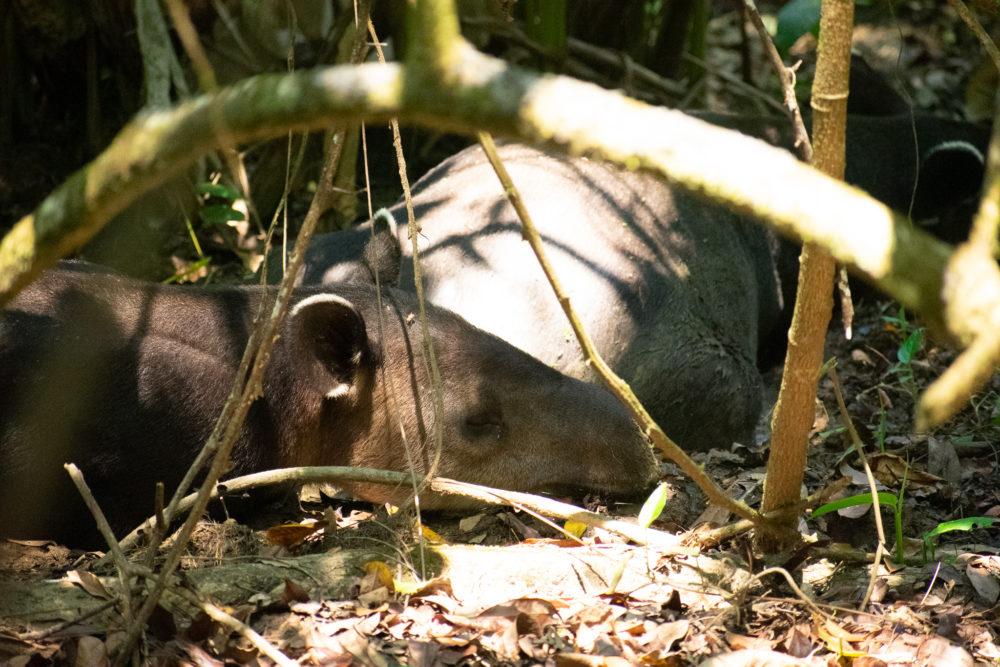
Drake Bay vs. Puerto Jimenez
These are your two choices for your home base when visiting the park. Both are very different towns. Puerto Jimenez is far larger and easier (cheaper) to access because you can just take buses instead of buses & boats.
But the wildlife is better in Drake Bay. In fact, it’s one of the top destinations for whale watching in the world. It’s also a lot prettier & has some neat hiking trails along the coast that make it a worthwhile stop all on its own.
That being said Drake Bay is far more expensive (due to the boats + overall remoteness). If you only have time for a day trip…I don’t think the cost of visiting is worth it.
If you’re here for wildlife like us, there’s really only one choice—Drake Bay.
Getting to Drake Bay
The one downside to Drake Bay is that it’s a bit of a fiasco to get there. We (like many people) were coming from Uvita. So here’s what you have to do…
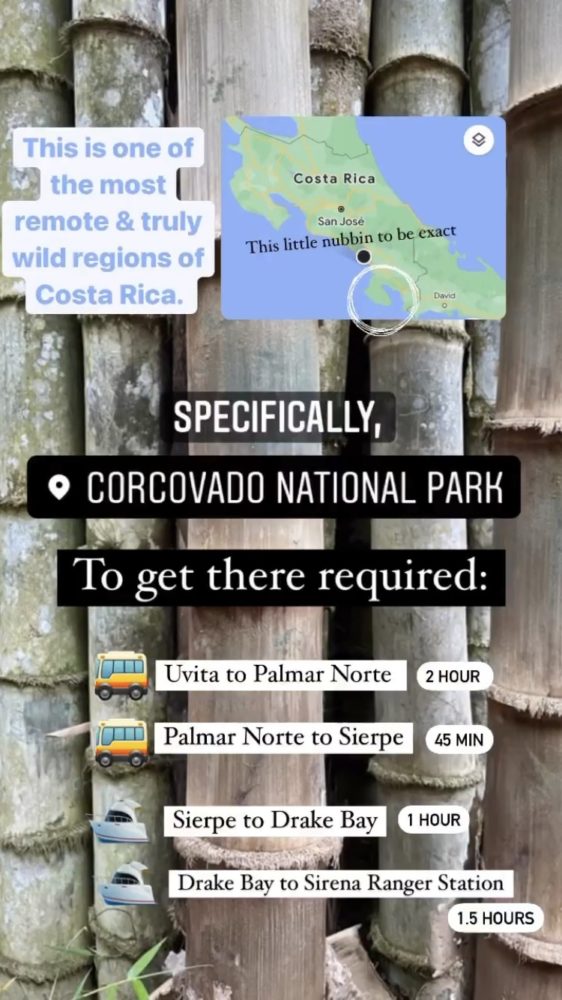
Route: Uvita– Palmar Norte– Sierpe–Drake Bay
Bus from Uvita to Palmar Norte (1.5 hr & $4.50)
Collectivo from Palmar Norte to Sierpe (20 min & $4.25)
6 AM (sometimes), 8:30 AM, 11:30 AM
Available all Day
Technically there is a bus from Palmar Norte to Sierpe for only $1.15. But the buses from Uvita drop you off at the collectivo stand instead of the main bus station. But because of the weird + limited boat schedule to Drake Bay, if you wait around for the public bus you might not get there in time for the last boat & have to wait 3-4 hours for the next one. Or worse. Have to spend the night in Sierpe. Just bite the bullet and get the collectivo unless it’s super early in the morning.
Boat from Sierpe to Drake Bay (1 hour & $25)
11:30 AM + 4 PM
This final boat is really beautiful and winds through mangroves before hitting the ocean to curve into Drake Bay. The boat driver will drop you at your designated beach depending on the hostel of your choosing. So know your hostel name ahead of time.
Budget Travel Tip: If you are staying in one of the many jungle hostels along the coast or not directly in Drake Bay town, you should stock up on groceries BEFORE you grab the bus from Uvita. There’s no stopping to get any once you’re on the road & the walk to Drake bay will be long & sweaty. Also, groceries are just really expensive on this peninsula.
ANOTHER EXTREMELY IMPORTANT NOTE: There are no ATMs in Drake Bay. & most tour agencies prefer cash/or have fees when you use your card. So bring a lot of cash. You can ask the collectivo in Palmar Norte to make a quick ATM run if needed.
Where to Stay in Drake Bay
While we’re talking about picking hostels & getting dropped off in the jungle…here are some good options for budget travelers.
Allegra Hostel
This hostel is right by the “cheap” (nothing in Drake Bay is truly cheap) groceries. Be sure to stock up here if you forgot before or plan to move to one of the more scenic jungle hostels later. (This is what we did + recommend).
Corcovado Jungle Hostel AKA The Tent Camp
I came to really love this place. This hostel is a little different. First, it’s tucked into the jungle along the scenic coastal hike (that I’ll give you details for a little later) & second, you sleep in literal tents.
Tents with mattresses inside sitting on a massive jungle viewing platform, but simple tents nonetheless.
The amenities here were a little rough. The bathrooms and kitchen closest to the tents were disgusting because apparently, people don’t do their dishes. But out in the jungle, you expect to rough it.
The facilities by the waterfront restaurant were actually really nice. The food here was also the cheapest in the area (& tastiest). On our last night we splurged on cocktails and were surprised to find that for $6 it was the BEST Margarita & Pina Colada we had in Costa Rica. & as former bartenders—we know our stuff.
My personal lodging recommendation (What We Did): Stay 1 or 2 nights at Allegra or another hostel in town (especially if you forgot groceries), do your Corcovado tour, & stay another 1-2 nights at a hostel in the jungle-like Corcovado Jungle Hostel. This lets you fully experience all Drake Bay has to offer.
Booking Your Tour of Corcovado National Park
There are a few things you need to know about booking your tour of Corcovado National Park.
You must book your overnight tour of Corcovado at least 1 week in advance.
Don’t be a lazy backpacker like me and try to book the day before. It doesn’t work. There are only so many beds at the ranger stations and they fill up far in advance.
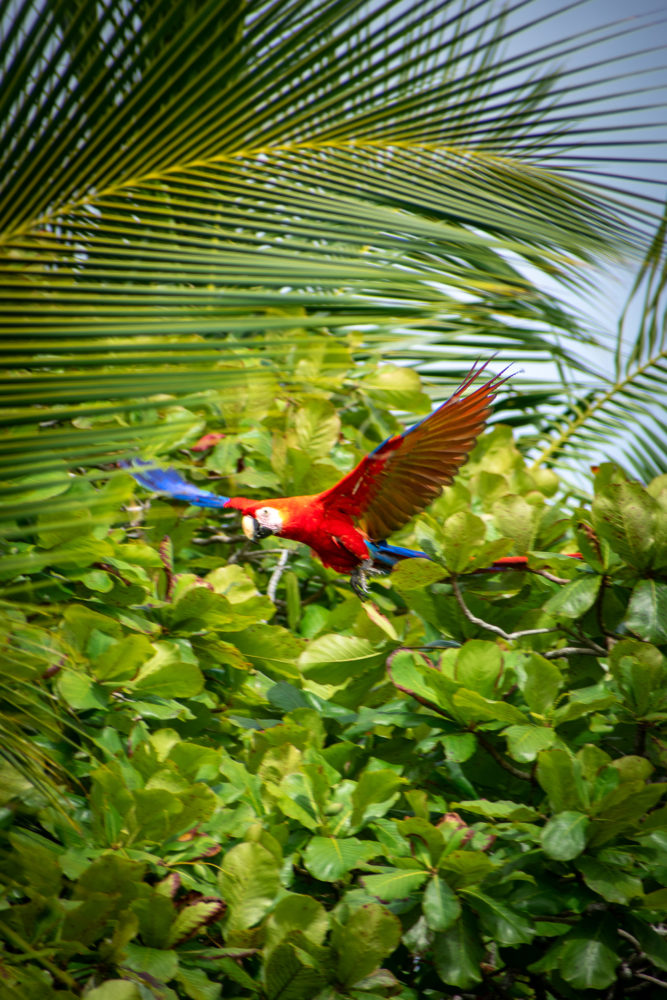

There are a few options for tours which I will break down later but the most popular are…
Single-day tours.
Cost: $100 pp.
Overnight at Sirena Ranger Station (2 days)
Cost: ~$350 pp.
Overnight at Sirena + Hike to Puerto Jimenez (2 FULL DAYS & Does not return by boat to Drake Bay)
Cost: $400+ pp.
All tour companies offer basically the same itinerary at the same prices. The difference is in guides. & trust me…that’s the single most important factor in finding wildlife.
Do I need to go with a guide?
Legally, yes. & if you want a chance at seeing actual wildlife—then also yes. Technically travelers can stay at hostels rimming the park and utilize their trails that skirt the park boundaries BUT (& this is a big but) you likely won’t see anything more impressive than howler monkeys on these outings. Without an experienced guide who knows the jungle & an excursion that takes you deep into the depths of the park, you’ll miss out on all the cool wildlife the park has to offer.
The cost of getting to Drake Bay is so high that there’s no point in visiting if you aren’t going to commit and give yourself the best chance at seeing wildlife.
Should I Just Do a Day Tour?
No. 100% no.
We met lots of travelers who were disappointed & felt ripped off by Corcovado National Park. The one thing they all had in common was they opted for the “day trip”.
Here’s why—
The “day trip” actually only allows you inside the actual park from 8 AM-Noon with some of that time spent gathering your group at the ranger station. The rest is spent eating lunch, riding the hour-long boat to/from the park, and waiting at your meeting point.
It’s simply not worth it. And since morning + evening are the best time for wildlife, you’re also hiking at the worst time & in the blistering heat of the day.
My 5 Reasons Why You MUST Do an Overnight Tour
- You’ll stay in the physical park 22 hours longer.
- 4-5:30 PM is the most active time for big cats like Pumas. This is when you’ll likely see them. (If you’re lucky).
- Group sizes are smaller. Ours was only 4 people. Better for spotting wildlife.
- The food at the ranger station is actually quite good! Day trips eat once they arrive back at Drake bay.
- You’ll do at least 4 long hikes instead of just the 1.
This is the Tour We Took & Highly Recommend.
Sukia Travel is THE agency to work with. For starters, they only hire local guides who know the terrain intimately. They focus on lesser-visited trails. They keep the group sizes small. Their entire mission is to promote adventurous immersive travel & we LOVED our experience with them. (Not sponsored or comped in any way— we just loved them!)
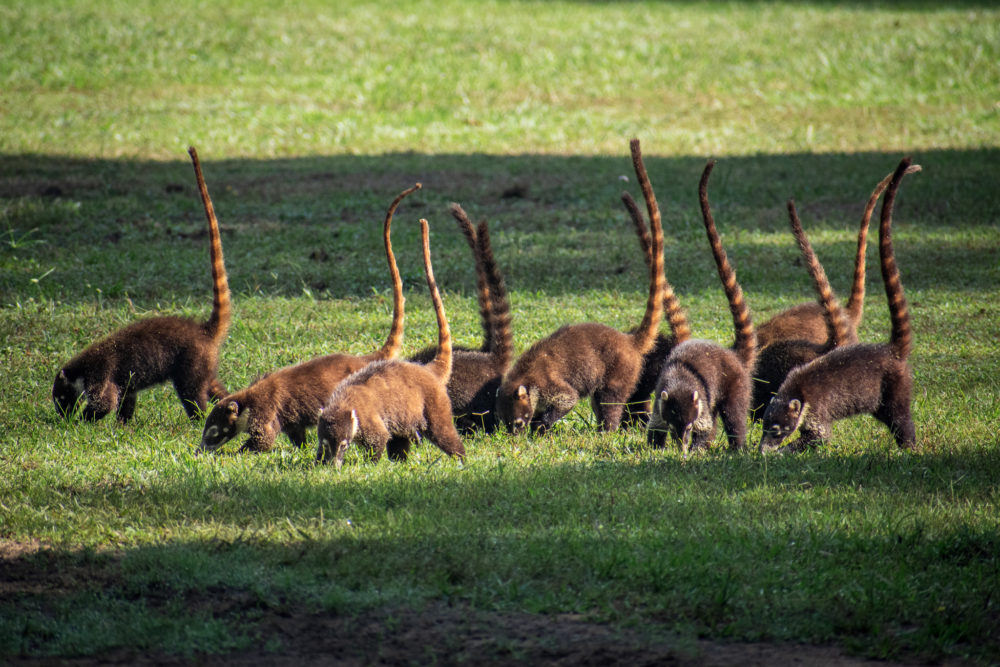
You can also contact them directly on WhatsApp to book your tour. Don’t forget to do it early!
Sukia Travel WhatsApp Number: +506 7117 9166
Our guide was Everest and he made it his personal mission to make sure we tracked down a puma inside the park. & he succeeded. Ask for Everest if you can.
Things to Do in Drake Bay
Now that you’ve arrived in town (hopefully at least a day or two before your tour) it’s time to explore what else Drake Bay has to offer.
Here’s a handful of things to keep you occupied…
1. Walk the Coastal Hike.
This narrow beachy trail is the single best thing to do in Drake Bay. To walk all the way to Josecino Beach is around 6.5 miles (one way!) I recommend staying at Corcovado Jungle Hostel & hiking the trail from here— only 3.5 miles one way.
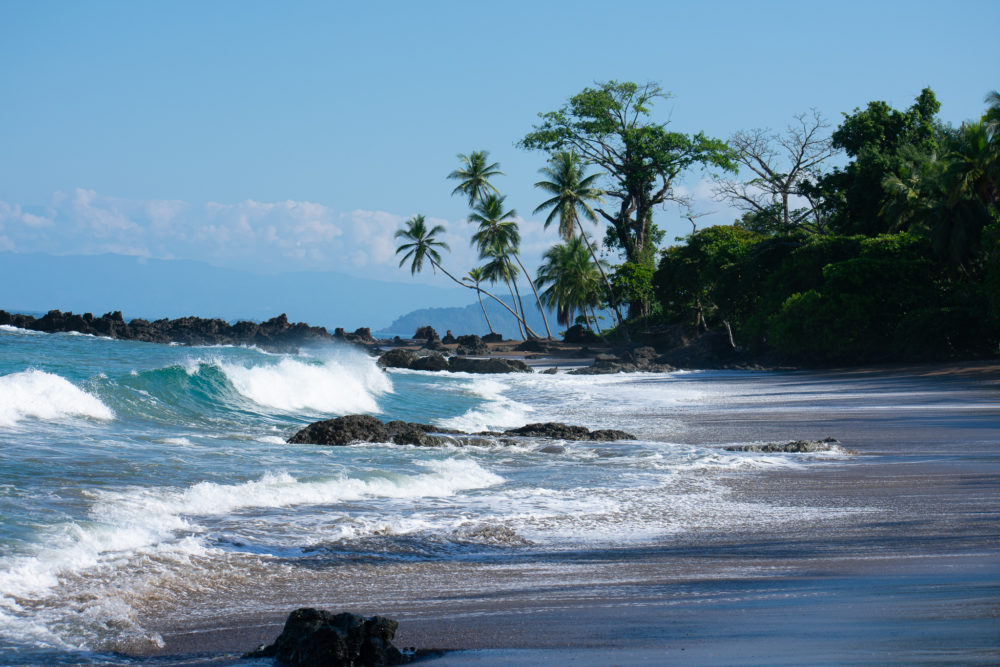
Still, be sure to start early because it gets hot on the trail. There is also a boat that leaves this beach at 2 PM & returns to Drake Bay if you’re not feeling up for the walk home.
Budget Travel Tip: Try to bring food because the few beach restaurants here are extraordinarily expensive (about $10 for a small plate of food & $3 a coffee).
Also, keep in mind the tides. There is one river crossing on the trail that during the rainy season/high tide is impassable. Time it wrong and you’ll have to wait on the beach for the water to recede.
2. Turtle Rescue Center
This center sits on San Josecito Beach. During turtle season they release baby turtles at around 2 PM.
3. Cocolito Beach
Only 1.25 miles down the coastal trail (from Drake Bay) this is the prettiest beach in the area. It’s also great for sunset. I recommend going in the late afternoon with a few beers. It’s an easy and well-marked route from Drake Bay town.
4. Rent a Kayak.
If you have the money to spare grab a kayak rental or take a kayak tour of the area from the main beach.
5. Join a Night Walk.
Nighttime wildlife on the rainforest is totally different. It’s also easy to see straight from Drake Bay. Expect to typically see insects, frogs, and other reptiles. We did this in Puerto Maldonado on our Peruvian Amazon excursion so we skipped it here.
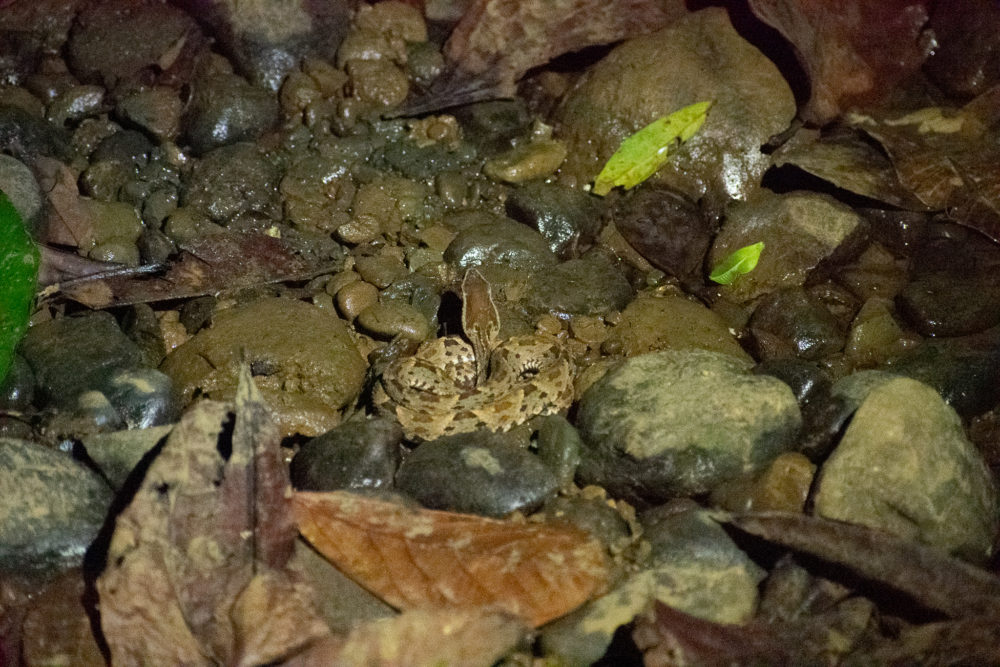
You won’t walk around at night inside Corcovado on your tour (far too dangerous with the Jaguars, fer-de-lance vipers, etc.) so it could be a nice addition.
6. Whale Watch!
If you’re lucky you’ll spot whales or dolphins on your boat ride to Corcovado National Park (we did!!) & you won’t have to pay for an entire other tour. But if you don’t get lucky & you’ve always dreamed of seeing humpbacks— you can do it here.
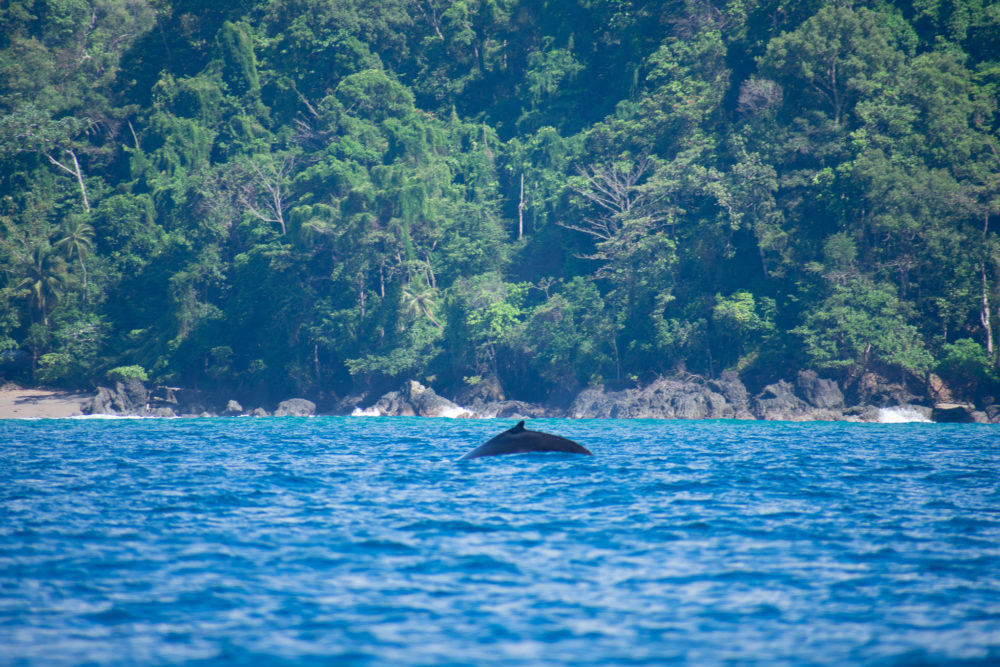
7. Snorkel trip to Cano Island.
This is also a popular tour from Uvita. Here it costs $80. We snorkeled in Coiba National Park in Panama which is relatively nearby so we assumed it was going to be too similar to warrant another expensive trip. But considering how amazing that snorkeling was I HIGHLY recommend snorkeling at one of the two destinations.
If you’re a diver this is supposed to be an amazing region for diving. Let me know in the comments if you give it a try!
Where to Eat on a Budget In Drake Bay
As I already mentioned, everything is pretty expensive in Drake Bay so budget travelers should plan to cook all or most of their meals. But if you want to eat out here are two options…
Delicios Restaurant
Good food. Reasonable prices. & has a HH 2 for 1 on beers during the daytime.
Waterfront Food Trucks
This is your cheap tasty option. Egg arepas for breakfast & fresh juice for only $2.
What to Expect in Corcovado National Park
I arrived with absolutely no idea what to expect from our Corcovado National Park trip. So here’s a breakdown of what a typical overnight looks like.
Day One (Morning)
You’ll wake up before light to meet your guide at the sea shore at 6 AM in Drake Bay. Then you’ll embark on a 1-hour boat ride to the heart of the national park looking for whales and dolphins along the way.
Upon arrival at the park, the beach will be crowded with day-trippers and a park ranger will check everyone’s bags for food. Snacks/outside food is prohibited in the park so that guests don’t feed the animals and they remain wild. As it was COVID times, we also got a quick temperature check.
Then we were off. We followed our guide down narrow packed dirt trails covered in leaves and twisting roots. Heading the mile and half to the Sirena ranger station where we would sleep. This is the first animal spotting walk.
If it wasn’t so hot & muggy the hikes wouldn’t be difficult. But be prepared for long days of walking.
Once we reach the station you’ll drop your bags and regroup. Before doing one more pre-lunch hike.
What is Sirena Ranger Station like?
You’ll sleep in one of the white mosquito-net-covered bunks in the open-air dorms. There’s also a really nice restroom & showers as well as a dining hall where you’ll eat all your meals as a group. In between hikes/meals you can buy coffee ($2 a big cup), souvenirs, & snacks/juice whenever you like. They even accept credit card.

If you’re worried about leaving your stuff behind be sure to bring your own (small) lock to utilize there public lockers at the station. Or you can rent a padlock for $4.
Day One (Afternoon)
After lunch (a simple meal with fruit, juice, & a massive portion of fried rice) you’ll get a short break during the heat of the day. There are few animals out at this time anyways. Around 2-3 PM you’ll hit the trail again for a long hike that will last until dinner. Your guide will pick the best trails for your group.
After sunset by the water, you’ll eat a massive dinner (it even comes with dessert). Lights go out at 8 PM and then you’ll head straight off to bed. Trust me you’ll be tired. & you’ll have a 5 AM wake-up call to beat the next day’s visitors on the trails.
Day Two
This is where a headlamp will come in handy. Your morning hike will be dark. Then breakfast and one more mid-day hike before you catch the boats back at 12:30 PM. Your final meal and last moments together as a group will be at a restaurant in Drake Bay. This is an included meal in your tour.
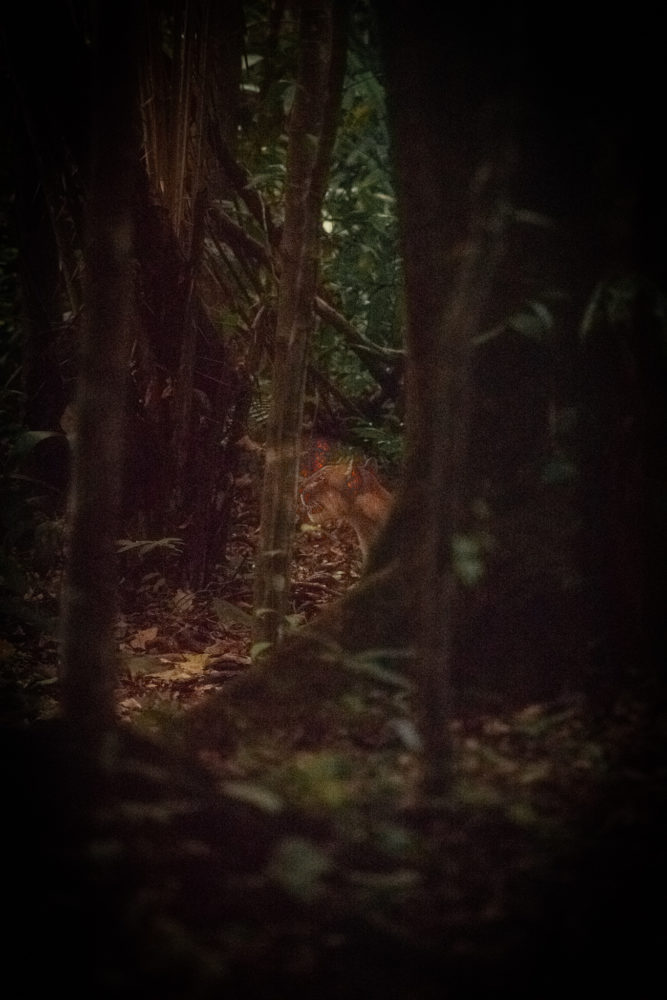
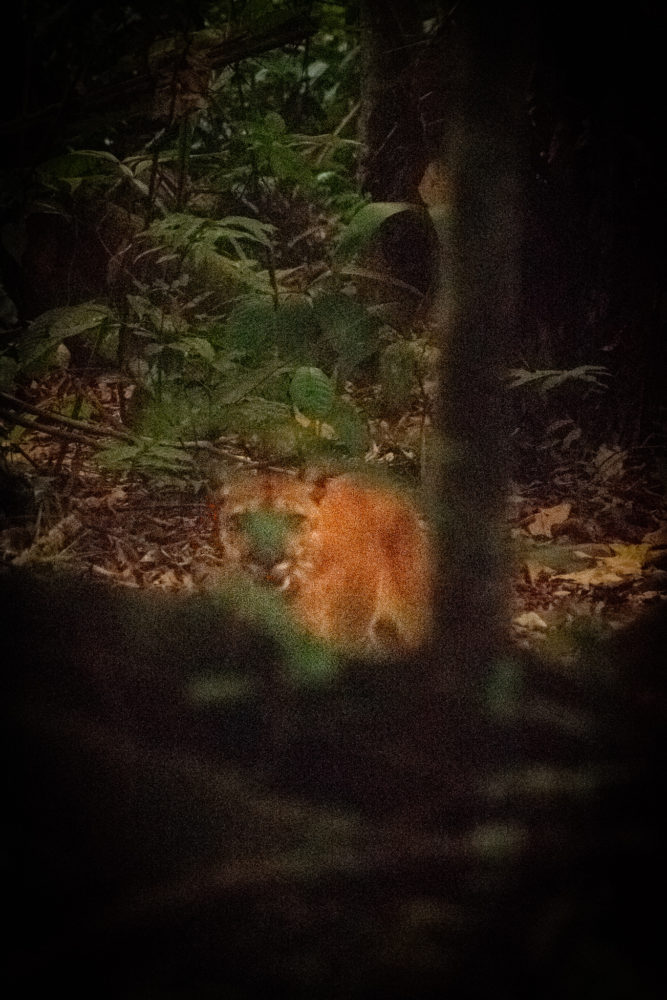
We were exhausted but also had to hike out to our jungle hostel that afternoon which meant another 2 miles of trail. But we managed. If you stay in the Jungle Hotels you can also ask to be dropped off there instead of returning to Drake Bay with the group for lunch.
What To Bring in Corcovado National Park
So what should exactly you bring into Corcovado National Park? Here’s a quick packing list.
- One refillable filter water bottle. (LifeStraw is always my choice)
- Swimsuit.
- Camera w/ Zoom Lens. Lots of the wildlife is far away.
- Microfiber towel. You’ll definitely want to shower after hiking for hours in the heat.
- Extra tank top & shorts. I thought you would want pants bc jungle insects but the guide said this was better.
- Headphones. Or earplugs. To help you sleep.
- Hiking boots.
- Teva’s. Or other active sandals. It’s nice to have something to change out of after a full day of hiking.
- Tall hiking socks.
- Dry Bag. This one on Amazon is what we use. If the sea is rough or it rains (you are in the rainforest) you’ll need one.
- Headlamp. You can also just use your phone. But if you have one with you it does come in handy here.
Where should you put the rest of your things? Most hostels will keep it for you free of charge. But if yours won’t for whatever reason, Sukia Travel was willing to hold ours securely until we got back from our adventure.
Catching The Boat Out of Drake Bay
There are only 2 boats every day that leave Drake Bay. 7:30 AM & 2:30 PM. I highly recommend arriving 15-30 minutes early. There are no tickets and they will cram everyone on the boat regardless of capacity.
Just wait down by the water with your bags where you were dropped off and the Captain will direct you to the correct boat when the time comes.
Our boat only cost $17 pp this time around. I’m not sure how they calculate the cost. I think it’s safe to expect to pay another $25.
So how much does this whole endeavor cost? & is it worth it?
Here’s a breakdown of what we spent per person.
Getting to Drake Bay: $20- $30
Corcovado Tour: $355
Groceries for 3 days in Drake Bay: $25
Average Hostel Price: $11 (3 nights = $33)
Leaving Drake Bay: $17
Total for 4 Nights: $450 per person.
Is it expensive? Yes. But is it worth it? Absolutely. Granted we got super lucky or blessed with our guide so it’s easy to see why we loved this experience so much. This is one of the most adventurous activities in Costa Rica & for wildlife lovers— it doesn’t get better than this.
Our trip to Corcovado was our favorite experience in Costa Rica. We were fortunate enough to spot Tapirs, Howler Monkeys, Spider Monkeys, Capuchins, Deer, Wild Pigs, Fer-de-lance vipers, Coatis, Macaws, Pumas, King Vultures, Humpback Whales, Dolphins, & other colorful tropical birds. To say we were lucky is an understatement. And it was all thanks to Everest our guide. Feel free to reach out in the comments or reach me directly on Instagram with any questions about planning your trip to Corcovado National Park.
Save This Post For Later!
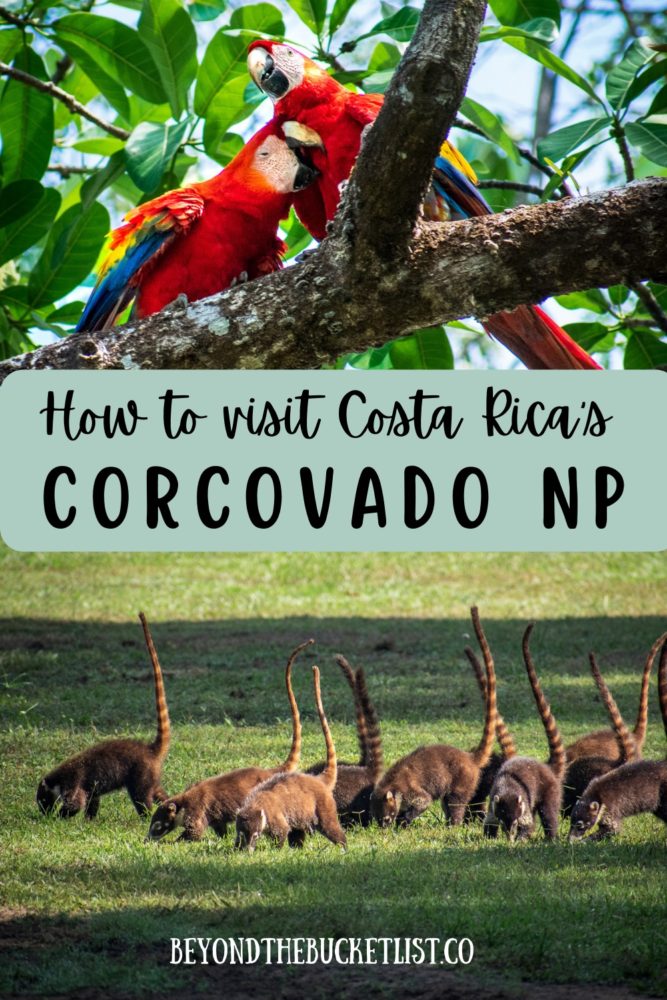
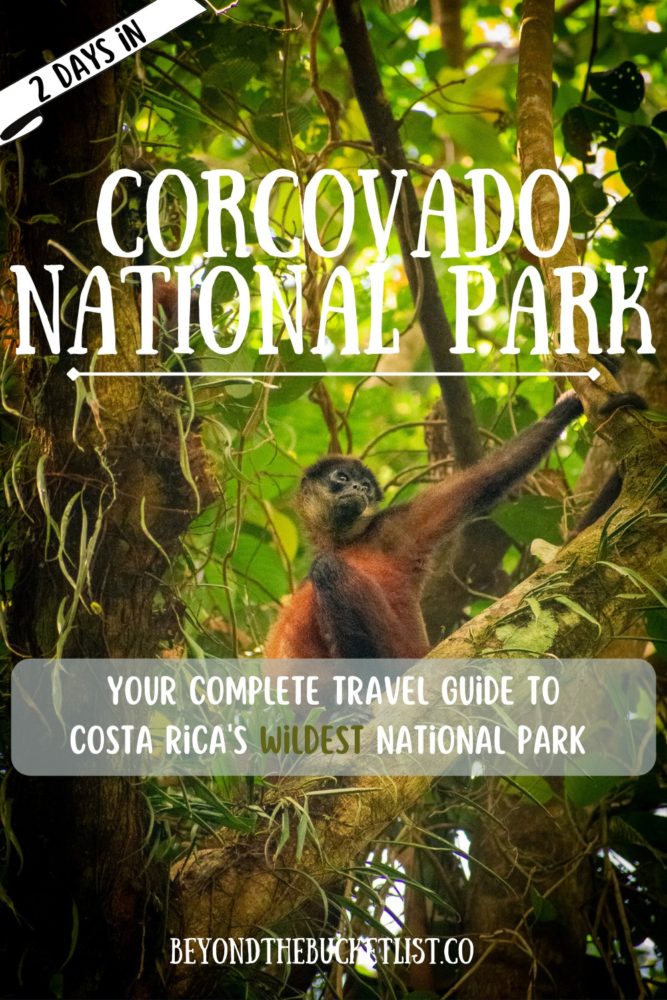



No Comments